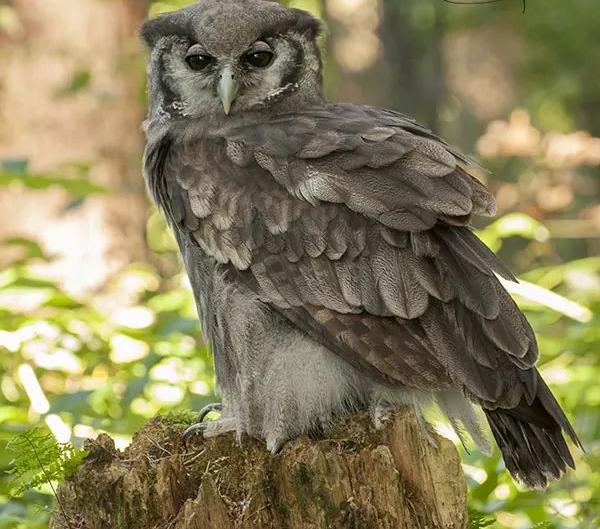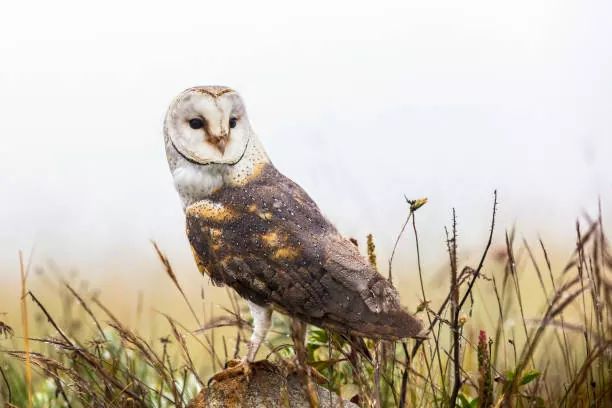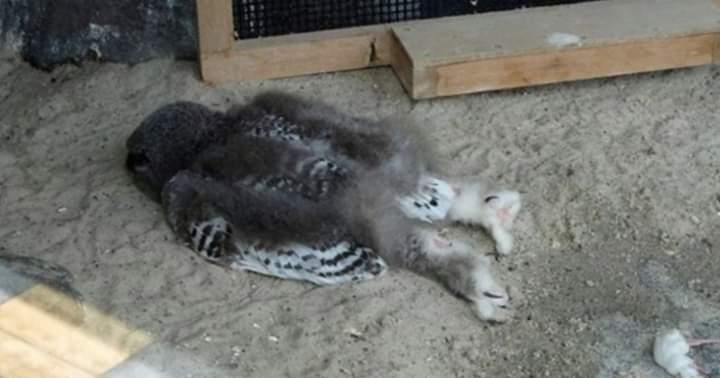
An African Owl is a great hunter. The world’s largest owl is the Eurasian eagle owl. Africa is also home to an eagle-owl, and this is Africa’s largest owl: Verreaux’s eagle-owl — 66 cm (26 inches long), also called the milky eagle owl, or the Giant eagle owl.
This large African owl is found widespread in sub-Saharan Africa, but not deep into rainforests and mainly lives in dry, wooded savanna.
The highest populations/ densities of these owls are found in Eastern and Southern Africa.
- When it comes to birds — this is an Apex predator, and its favourite prey is not something we usually think a big and powerful bird will hunt — African hedgehogs!
Owls do not have a ‘death-stare’.
Owls do not look at you from the corner of their eyes — they swivel their head, they can reach 270 degrees, so that they look at you straight in the face.
There is a good reason for this. They have to as they have no choice — Owls do not have swivelling eyeballs.
African grass owl.

There is an owl that is a bit different and can be found in sub-Saharan Africa (Its name gives it away). This owl is sometimes thought to be a barn owl as look similar, but this species belongs to the barn owl family. As said, they are different to the barn owl in the way they build nests — barn owls prefer to build their nests in sheltered buildings, and this owl builds nests in wet/moist grasslands near rivers or marsh/vlei areas. In East Africa they can be found nesting in drier grasslands.
- A vlei is an Afrikaans word — a low and marshy area of land that is fed by a stream or other water source, like a small marsh or shallow lake that is seasonal.
African Owls have huge eyes for a very good reason. They are that large so they can absorb more light to see better, as they fly around to find and pursue prey.

Do you know that baby or young owls (called owlets) sleep on their stomach? Their heads are too big and heavy to support their weight like an adult owl.
Courteous male African owls: The beetle-baiting owl.
There is a little owl that cares for his lover and makes sure she is always well-fed.
This clever owl is the burrowing owl, found on the grasslands and agricultural plains flowing over many parts of North, Central and South America. They prefer to nest on the ground and build their nests in burrows (the black-tailed prairie dogs offer the best burrows, and these two species are great buddies — they look after each other — the prairie dogs bark when danger approaches and the burrowing owls make a ‘cak-cak-cak-cak’ sound).
For about a month, usually only once a year, the female owl incubates 6-9 eggs, and during this time her male shows just how considerate and smart our feathered friends can be.
He feeds her during this time, bringing her mice, grasshoppers, snakes, scorpions, frogs and small birds are also on the menu. However, his best way to obtain food is that this little male will leave to go in search of cattle or buffalo dung. or other animal droppings. He returns, proudly carrying his collected ‘bait’ in his talons.
He carefully arranges these around the burrow and even adds some to the tunnel of the burrow. He stockpiles them, and this strange bait attracts insects and the juicier and larger — the dung beetles. These offer the nesting female live and nutritious food — some insects even toppled into the nest — much to the female’s delight — take-away food a la burrowing owl.

